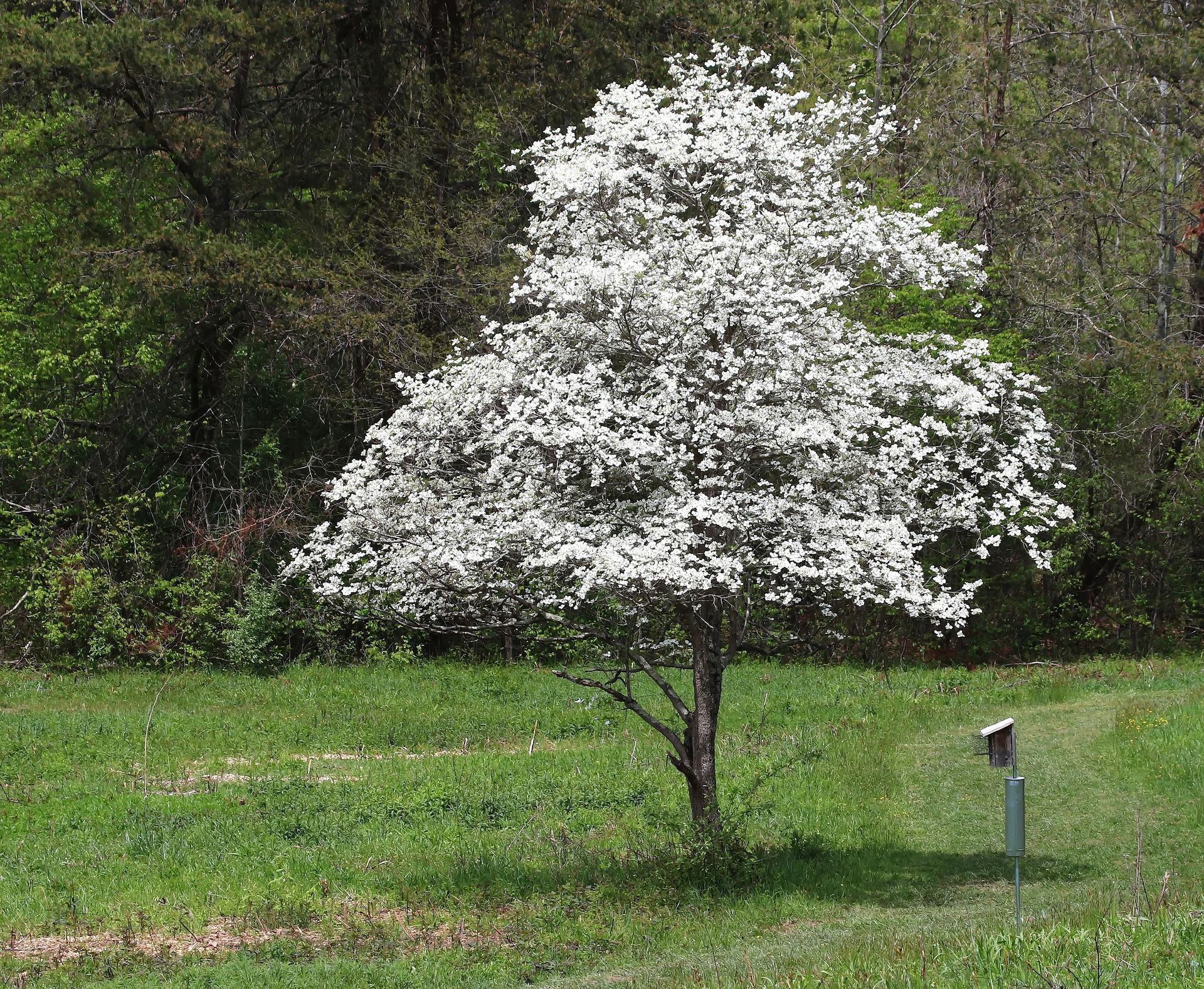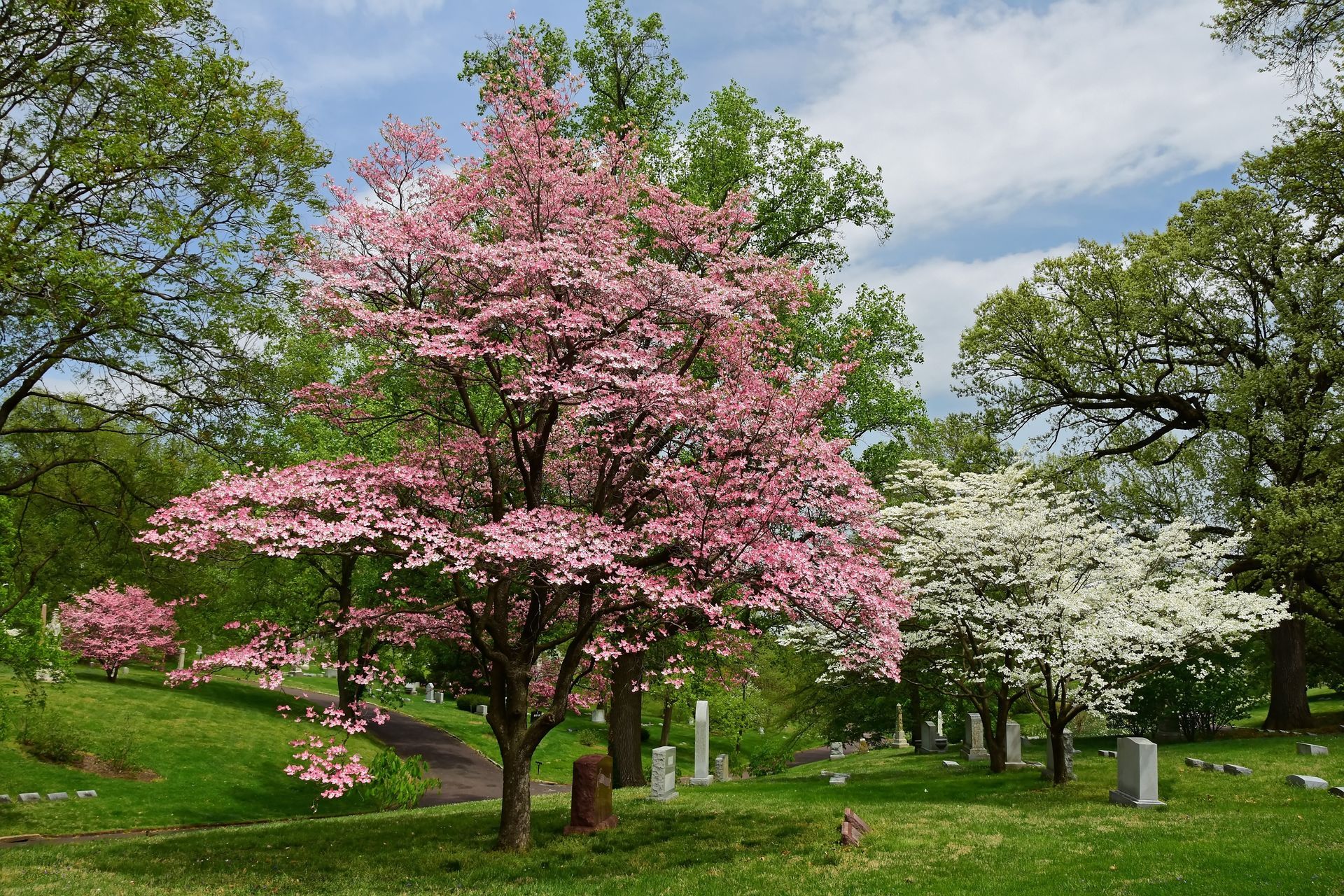Dogwood Tree Care

Dogwood trees are characterized by their onion-shaped flower buds, alligator bark, showy flowers, and beautiful leaves. Most people grow them near the street or as landscape trees. The following dogwood tree guide will help you develop healthy trees with beautiful blooms.
Fast Facts for Dogwood Tree Care
| Common Name | Redbud, Judas Tree |
|---|---|
| Scientific Name | Cornus florida |
| Month(s) of Harvest | September and October |
| Light | Can grow in partial shade or full sun but prefer partial shade in the morning |
| Water | Should be watered deeply at least two times a week for the first month, followed by weekly watering for the second and third months of growth |
| Soil | Best grown in loamy, rich, sandy, and well-drained soil |
| Fertilizer | Thrive with a fertilizer NPK ratio of 12-4-8. Need nitrogen more than other nutrients since it forms chlorophyll and allows the tree to grow. |
| Pests | Attacked by the dogwood borer, dogwood club gall midge, and the dogwood twig borer |
| Diseases | Prone to Septoria leaf spots, canker, Discula anthracnose, spot anthracnose, and powdery mildew |
| Growing Zone | 5 to 9 |
Table of Contents
Everything You Need To Know About Flowering Dogwoods
It's essential to know how to care for a dogwood properly. Besides its soil, light, and water requirements, you should also know when and how to prune the plant and how to fertilize it.
Soil & Container
A native flowering dogwood tree will grow best in the USDA hardiness zone of 5 to 9. These trees thrive in well-drained, coarse, slightly acidic soil with a pH between 5.5 and 7.
Dogwood trees are sensitive to rapid changes in soil temperature. That's why they are more abundant in areas with woodland soils that have consistent temperatures.
Although flowering dogwoods can tolerate seasonal dry periods, they are not drought-resistant. They can also not thrive in saturated or heavy soils because of their shallow root systems.
If you plan to plant your tree outside, choose a place with broken or partial shade. Or, you can grow it in a container inside and then transplant it outdoors when it's large enough. If your native soil does not have enough organic matter, add peat moss to the mix.
Note that flowering dogwoods are not resistant to stresses like pollution, salt, drought, and heat. Such trees make the plant more susceptible to pests and diseases.
Root Inspection
If you opt for the second method mentioned above, inspect the roots before transplanting a dogwood tree. Here's how:
- When you take the plant out of the soil, wash the roots with a hose.
- Look for broken or dead roots and remove them.
- Locate circling roots and adjust their position in a way that they start growing outward from the trunk.
Water Requirements
Flowering dogwoods need daily watering in the first few weeks after planting. After the first month, you should only water twice a week. Follow this routine for the next year.
A dogwood tree takes anywhere from six to 12 months to establish. After that, only water your dogwood tree once a week for up to an inch. Excess water makes flowering dogwoods susceptible to diseases.
Fertilizing and Filling
Fertilizing is an integral part of dogwood tree care, but avoid over-fertilizing, as it can result in root rot. You should fertilize dogwood trees in early spring before flowering takes place. The second fertilizer application should come in the summer.
If you've planted your tree on a lawn that you have already fertilized sufficiently, there's no need to add extra fertilizer to the dogwood tree. It's already getting enough nutrients from the soil.
Sun & Placement
Plant dogwood trees in an area that gets full sunlight, if possible. Otherwise, flowering dogwood trees can also grow in partial shade. Most species do well with full sun on the north side and broken shade on the south.
Trees growing under shade will grow quickly. They're also taller. But they have poor flowering and are less dense.
Meanwhile, trees that get more sun produce more flowers have better fall colors, are bushier, and tend to be stouter. But if you plant your tree in full sun, you should also water it regularly to prevent dryness.
Temperature and Humidity
Areas that get afternoon shade and morning sun are the best for planting dogwood trees. These trees can tolerate low temperatures but do best in areas with mild winters and warm summers. A dogwood tree will not be able to survive if your regional temperature goes below -26°C (-15°F) frequently.
Pruning
The best time to prune dogwood trees is early spring or late winter. Since the stems are thin, a pair of sharp secateurs will be enough for pruning dogwood trees.
Start by removing all dead or broken branches. Then, cut out any branches that are crossing each other or rubbing against each other. Finally, remove any branches with blight or other diseases.
Did You Know? The dogwood tree is the state tree of Missouri and Virginia.

Flowering Dogwood Tree Problems
Due to their low disease resistance, flowering dogwoods are prone to several problems. These vary based on the types of dogwood trees and their environment.
Not Flowering
The main reason for dogwood trees not flowering is their age. Young dogwoods don't flower. That often worries growers who expect their plants to flower a year following planting. Dogwood trees generally bloom after five to seven years of maturing.
Yellowing Leaves
There can be a few reasons for your dogwood trees to have yellow leaves, but iron chlorosis is the main one. Iron chlorosis means your dogwood tree isn't getting enough iron from the soil. You can treat it by applying chelated iron fertilizer according to instructions.
When planting dogwood trees, do a soil test beforehand. Since dogwood trees need acidic soil, the alkalinity of the soil matter can make it impossible for them to absorb iron.
Powdery mildew can also cause yellowing of leaves on dogwood trees. Other symptoms of powdery mildew include:
- White fungal growths on the underside of the leaves
- Curling of leaf edges
- Purple-red blotches on the leaves
- Tiny black fungal structures on the bottom of the leaves
Powdery mildew can be treated with a horticultural oil like Sunspray Ultra-Fine Spray Oil. Alternatively, you can use a plant-based oil like jojoba oil or need oil.
A mixture of potassium bicarbonate, liquid soil, and water may also work to remove fungus from the affected area.
Wilting Leaves
The dogwood twig borer is the prime culprit responsible for wilting leaves and drooping twigs. It's a slender beetle measuring 10 to 15 mm long with yellow-tan wing covers.
The dogwood borer attacks flowering dogwood trees when they mature. If you notice this beetle at the site of wilting leaves, clip off the twig several inches below the affected area with a sharp pair of pruners.
Don't simply throw away the twig. Destroy it so that the beetle can't return to the tree.
You can also use Pyrethrin as an insecticide against this beetle. Dogwood borers surface from April through July, but you should start spraying the insecticide in early May. Apply it every three weeks.
Damaged Leaves
Dogwood tree leaves can sustain damage due to the following:
- Cankers: When cankers form on dogwood trees, they allow insects to pass through. The initial symptom of cankers is pale and small leaves.
- Leaf Scorch: If your dogwood tree leaves turn yellow or brown, they probably suffer from leaf scorch. It is caused by inadequate nutrient supply or drought.
- Dogwood Blight: The dogwood anthracnose fungus caused dogwood blight. You'll notice purple and tan spots on the leaves in the lower canopy. The infection spread further through the main branches and shoots.
Learning About Dogwood Trees
An interesting thing about flowering dogwoods is that their flower petals aren't scientifically classified as petals. Instead, they are bracts, modified leaves surrounding a cluster of 20 flowers.
Most dogwood trees have white blooms, but there are wild pink cultivars too. Irrespective of color, flowering dogwoods are identified by their flattened flower buds in winter.
Dogwood Tree Origin
Flowering dogwood trees are native to eastern Northern America, eastern Mexico, and Canada. Their genus name is 'Cornu', which translates to 'horn' in Latin. It's likely that the name is in reference to the dense and hard wood of dogwood.
Wild pink dogwoods were first recorded in 1731 in Virginia. Since then, plant breeders have developed several cultivars with red and bright pink blooms.
Sweet New Earth's Final Say On Flowering Dogwood Trees
Growing dogwood plants is a great way to add a pop of color and shade to your garden. From pink dogwood to white dogwood trees, there's a wide selection of cultivars to select.
As an ornamental tree, a pink flowering dogwood is a sight to behold. You must provide it with regular irrigation, full sun, acidic soil, and periodic fertilizer application. Make sure to perfect dogwood tree care to get stunning blooms when the time comes.

Christina Hernandez
Christina has done most of her research on environmental science but recently has changed her focus towards sustainable forestry. She has a passion for the outdoors and wants to spread that passion to the world.
Join our community!
Join to receive guides, insights, and the latest gardening deals!
